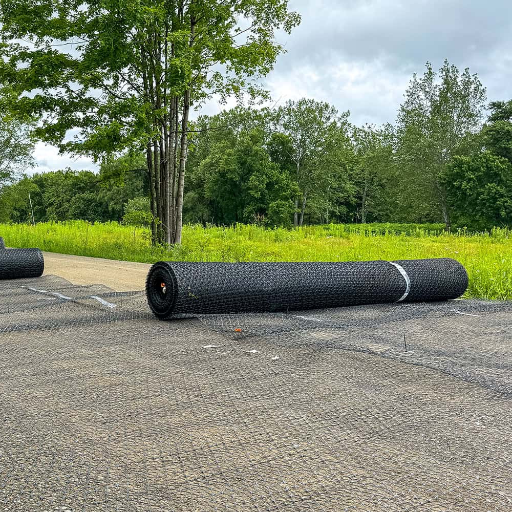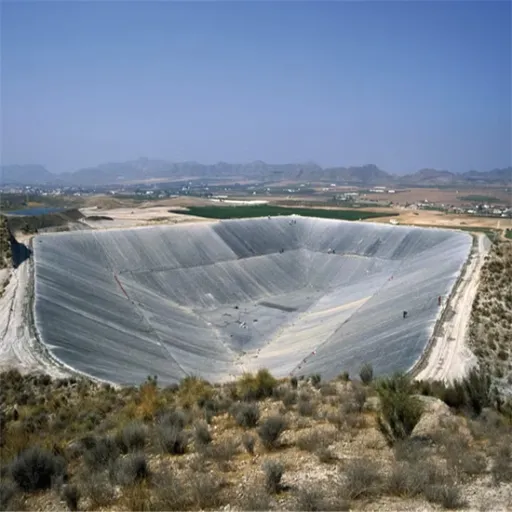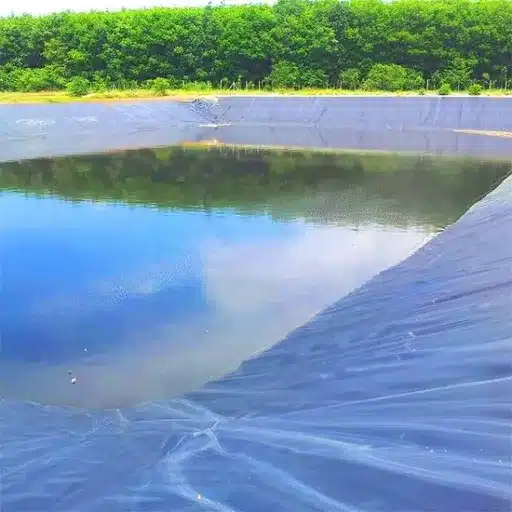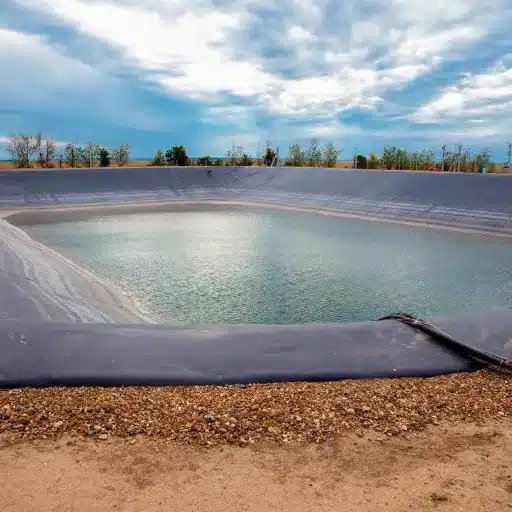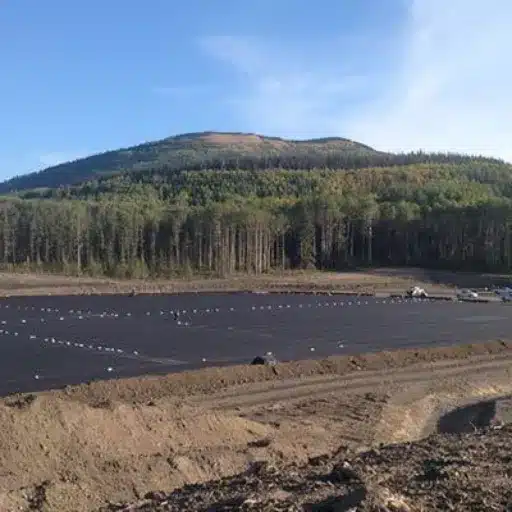When considering durable and reliable infrastructure, soil stability maximizes the myriad requirements. Road construction, retaining walls, stiffening for a girder-heavy load, or hardening for all is how safety, longevity, and performance are assured. This is where geogrids come into play. These newer revolutionary materials have provided a huge leap in soils reinforcement and load distribution, and in this article, we shall dwell over the fundamental role geogrids play in soil stabilization and road construction along with the benefits, applications, and why it has become the infrastructure answer of the day. Stay tuned to find out how geogrids can optimize your construction and tackle some of the hardest challenges in the field.
Introduction to Geogrid Technology
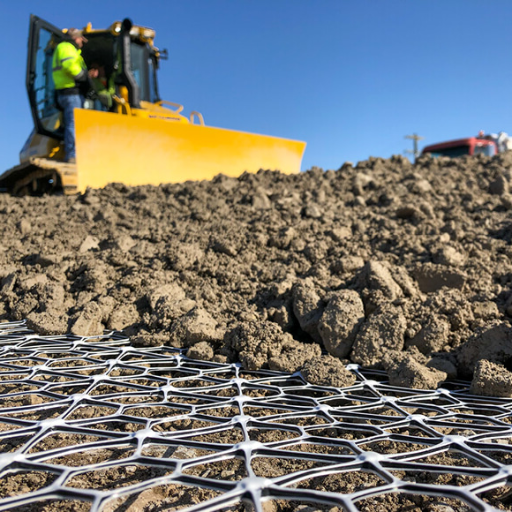
Geogrids are innovative construction products created for reinforcing soils and stabilizing them. Made mostly from polymers like polypropylene or polyester, they possess a grid structure. This structure is a way for the loads to be evenly shared, reducing soil movement to the minimum, and thereby lengthening the life of roads, walls, and various other structures. They represent the solution to many complex soil stability issues, economically.
Understanding Geogrids and Their Purpose
Due to their ability to stabilize and reinforce soils, geogrids are a must nowadays in construction and civil engineering. They transfer these forces by developing tensile characteristics, from which they force the soils to perform beyond natural capability. This is an important attribute for projects in weak or unstable grounds.
Three main types of geogrids are in current use in construction: uniaxial, biaxial, and triaxial. Each type is meant for a specific application. For example, uniaxial geogrids find application mainly for slope and retaining walls where strength is needed in one principal direction. Biaxial geogrids find their optimum use in places where equal strength is needed in two directions, such as in roadways and parking lots. Triaxial geogrids, however, are a more recent invention that performs better by distributing loads in various directions with improved efficiency than any other, thus making them suitable for heavy-duty infrastructure like railways.
Besides others, a key advantage is the economic efficiency of using geogrids. According to reports, geogrids have been able to reduce the overall cost of many construction projects by 25-30%, through material savings, reduced excavation, and quicker completion. For road applications, geogrids have been proven to increase the life span and durability of pavements with a reduction in maintenance cost by 50% over the life period of a pavement.
They even lower some sustainability factors in terms of the construction materials used and, in turn, reduce the carbon footprint. Geogrids have helped conservation engineering design in the sense that it allows local soils as opposed to fill materials to be imported; hence, they have eyes in the green movement.
Hence, it stands to the ground that geogrids work in tackling soil stability issues in a cost-effective and sustainable manner, thus improving infrastructure projects’ performance and durability.
The Need for Soil Stabilization in Construction
This question somehow arose during the run for human inventions, as it remained for some time unanswered. Soils upon which building materials were laid required stabilization, which can maintain human foundations.
According to recent research data, the global market for soil stabilization was worth almost $23.12 billion in 2022 and was predicted to continue the growth with a compound annual growth rate (CAGR) of nearly 6.5% from 2023 through 2030. This steady rise in trade communications explains the importance of soil stabilization techniques in meeting worldwide demands for infrastructure.
Construction methods combined with soil stabilization techniques improve the load-bearing capacity of the soil, as well as its strength against erosion, shrinking, and swelling. Recently introduced chemical stabilizers have proved to be extremely successful in strengthening weak soils. The new biogenic stabilizers are now increasingly being welcomed for their eco-friendly benefits and lesser carbon footprints.
Some case studies have illustrated actual impacts, wherein geogrid systems and lime stabilization of roads have had enormous improvements in performance and cost benefits. For instance, highways stabilized with lime-treated soils show increased stability by about 40%, hence less maintenance requirements and longer road lifespan. Besides, geogrids carved out cutbacks on the requirements of materials by up to 50% in most cases, thus improving the cost and environmental benefits.
With increased pressure on the original construction methods due to climate change and urbanization, soil stabilization is still critical to ensure the building of sustainable infrastructure that can endure harsh conditions and satisfy long-term needs.
Geogrid Applications in Road Construction: An Overview
The geogrid technology satisfies the need for increased road performance and sustainability. These geosynthetic materials strengthen soil and reinforce it under various construction activities. One of their primary applications is in base reinforcement, where geogrids are laid within granular layers to enhance load distribution and minimize deformation at the surface. Research indicates that geogrids may boost the bearing capacity of subgrades by 200%, thus obtaining more durable and reliable roadways.
Further applications include the construction of steep slopes and retaining walls adjacent to roads. As geogrids interlock with the surrounding soil, they reduce the risk of slippage and help stabilize the slopes even under difficult terrain. This guarantees the survival of the infrastructure and also cuts costs by reducing extra earthworks.
They are also used to reinforce asphalt overlays by reducing reflective cracking; hence they extend the life of the roads. Studies revealed that sections of pavement reinforced with geogrids live up to 25% longer than non-reinforced ones. This reinforces geogrids in reducing costs as asphalt sections were able to be made 20% thinner with geogrid reinforcement, which translated to materials savings and reduced environmental impact.
Finally, geogrids facilitate construction over soft soil such as marshes or highly watered soil where a conventional method would be practically impossible. In such conditions, geogrids aid in the creation of roads, thus improving accessibility of remote areas and bettering connectivity.
With such extensive utilization and strong proven track record of benefits, geogrids are capable of altering road building methods. The optimization of material use, enhancement of structural performances, and development of sustainability by the geogrids resonate perfectly with the increasing demands for resilient and eco-friendly infrastructure.
Latest Trends in Geogrid Applications
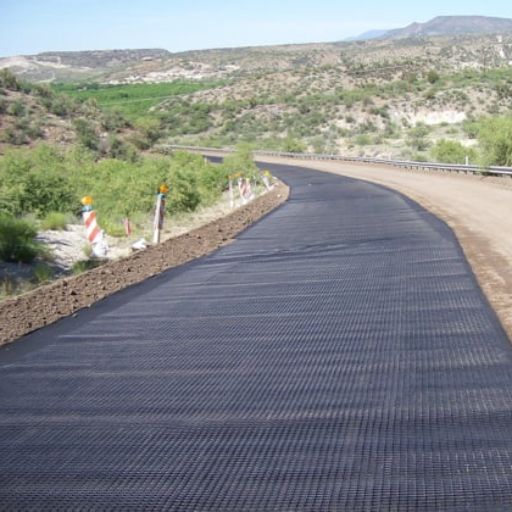
Application trends are steadily evolving, with materials and technologies having to be integrated into modern days of geogrid applications to enhance their properties and performance. For instance, polymer innovations and smart geogrids with embedded sensors can increase the durability and allow for real-time monitoring of the state of infrastructure. Further, greater attention is being given to applying geogrids for sustainable infrastructure to promote environmental conservation.
Innovations in Geogrid Materials
Recent innovations in geogrid materials have essentially been driven by the need for sustainable and efficient solutions for infrastructures. A great innovation is the development of geogrids that are made of recycled polymers. This way, waste is reduced without compromising structural integrity. Recent industry reports, for instance, suggest that such environmentally friendly geogrids can help reduce plastic waste arising from construction by almost 30%, thus providing a more convincing argument for environmentally conscious construction.
The use of smart geogrids with embedded sensor technology is progressively becoming widespread. They allow for real-time monitoring of strain, temperature, soil pressure, among other things, so that predictive maintenance can occur and infrastructure life can be extended. Data from a study in 2023 showed that maintenance cost savings of nearly 20% could be achieved through early detection of problems enabled by the use of smart geogrids.
Market data continue to highlight a growing acceptance of biaxial and triaxial geogrids owing to their enhanced capacity to bear loads. For instance, triaxial geogrids purportedly increased road performance under repeated traffic loads by around 35% compared to conventional materials. Such developments underline the rapid pace at which geogrid technology is evolving to tackle the challenges facing modern construction in a sustainable way.
Emerging Trends in Soil Stabilization Techniques
Nanotechnology technology has emerged as one of the promising trends in soil stabilization processes. Recent studies show that the use of nanoparticles such as nano-silica or nano-clays can improve the binding characteristics of soils, resulting in stronger and more durable surfaces. It is proven that treated soils increased compressive strength by 25-30% compared to conventional treatment processes.
Bio-stabilization methods appear increasingly popular for being sustainable options. Methods involving microorganisms like microbially induced calcite precipitation (MICP) can cause the soil to bind naturally. It was reported that soil erosion was reduced by up to 40% in areas stabilized with MICP, making it a greener choice.
Polymer-based stabilizers are also being used on site due to their capability to reduce water permeability and increase load-bearing capacity. Market figures suggest that the installation of these polymers continues to increase by about 15% every year, mainly fuelled by infrastructure investments in developed and developing nations.
The merging of geogrid technology with advanced stabilization techniques continues to deliver exceptional outcomes, particularly in road and railway projects. Contrastingly, when triaxial geogrids were combined with soil binders, costs decreased by 20%, and the infrastructure’s lifespan extended by more than 10 years. Such advances empower the transformation of conventional soil stabilization techniques through innovative technologies, rendering them efficient and sustainable.
Effect of Geogrids on Flexible Pavement Design
Geogrids have given a lift in the mechanical performance routines of flexible pavement design, where huge savings are involved. The advanced geogrd materials help to distribute loads better across pavement layers, reducing strain on subgrade and allowing for structural failure a little later. Studies suggest that geogrid applications in flexible pavement systems prolong the pavement service life by as much as 50%, reducing repair occasions and costs.
They further reduce the construction materials needed. Research on this effect suggests that geogrid reinforcement enables a reduction by almost 30% in the thickness of the base course with no diminishment in the pavement durability or performance. The saving in materials and transport costs again constitutes a second major contribution to sustainable construction by reducing consumption of virgin materials and its associated carbon emissions.
Moreover, at these high traffic loadings, geogrids enhance pavement stability significantly, hence making them specially useful for highways and heavy-duty transportation corridors. Field trials brought forth by various stakeholders have shown that roadways reinforced with geogrids experience 40% less rutting as compared to the unreinforced ones, thereby ensuring long-term safety and smooth surfaces. These important steps underline the importance of geogrids in the development of economic and environmental considerations in modern infrastructures and roadways designs.
Advances in Geogrid Technology
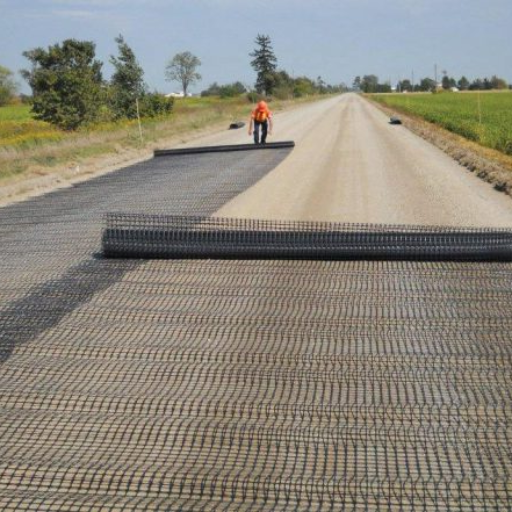
This concentration on enhanced durability, speedier installation, and environmental compatibility has been behind the ongoing development of geogrid technology in recent times. Modern geogrids are meant to improve load distribution to aid in increasing the life of the pavement. Field studies reveal that with the incorporation of geogrids in the pavement system, maintenance requirements are diminished as they affect less through material use and lowered carbon emission. These developments prove that the geogrid applications remain effective and continue to evolve in infrastructure projects.
Recent Developments on Biaxial Geogrids
From recent developments in the pursuit of performance and application efficiency, materials and manufacturing techniques have served bimodal enhancements in biaxial geogrids. One major development relates to the use of newer polymer blends to increase tensile strength without sacrificing flexibility. These materials allow biaxial geogrids to withstand higher load requirements and are thus used especially in infrastructure projects of huge magnitude like highways and airport runways.
Also, employing precision laser or extrusion technology in the manufacturing process is another development that ensures a very uniform aperture size, thereby improving the interlocking between the geogrid and aggregate material. A report by the geosynthetics industry in 2023 stated that these innovations have resulted in better load distribution properties of up to 30% compared to conventional biaxial geogrids, thus decreasing the structural deformation under repeated loading to a large extent.
Another big development is in promoting sustainability. Many of the biaxial geogrids today are fabricated using recycled polymers or themselves recyclable and thus minimize the environmental footprint. The studies suggest that the use of such sustainable geogrids may decrease carbon emissions through the life cycle of a project by on the order of 20-25%.
Hence, these improvements emphasize the ability of biaxial geogrids to foster construction methods that are sustainable, cost-effective, and durable, serving to meet the increasing global desire for building materials.
Enhancements in Permeable Geogrids towards Environmental Sustainability
Recent advances in permeable geogrid technology have been targeted at enhancing the geogrids’ environmental footprint while maintaining structural performance.
An interesting enhancement is the use of advanced materials such as bio-based polymers and recycled plastics. These materials gave a negative charge to the environment by decreasing virgin plastic production and simultaneously enhanced biodegradability properties without compromising the efficacy of geogrids. Research shows that geogrids made of recycled materials can significantly reduce the overall carbon footprint by 30-40% compared to their traditional counterparts.
Also, permeable geogrids now have higher rates of permeability, which allows for better containment of surface water runoff and helps groundwater recharge. Recent studies suggest that permeable geogrids enhance soil filtration capacity by up to 50%, thus making them a preferred choice for flood-prone zones and stormwater management.
In addition, smart monitoring technology integration is opening new avenues for growth. Embedded sensors in geogrids can now monitor soil moisture levels and structural integrity in real time, thereby improving the maintenance and lifespan of infrastructure projects. Based upon life cycle evaluations, these developments establish that geogrids have a greater potential for application in modern sustainable construction strategies.
Thus, with the help of these advancements, the industry can lend a helping hand to environmentally friendly construction practices while attempting to counter some major global issues like climate change and resource depletion.
Improved Ground Stabilization from Geocell Systems
The last decade has seen more advancement in the use of geocell systems, giving modern solutions for ground stabilization in various types of projects. These cellular honeycomb-like structures, usually fabricated from high-density polyethylene (HDPE), confine the soil and provide stability to slopes, roadbeds, and retaining walls. Recent studies and implementations have substantiated their effectiveness in controlling soil erosion, distributing loads more evenly, and reducing base material requirements.
According to the recent industry reports, the application of geocells can reduce pavement thickness by 50%, thereby keeping costs down and yielding environmental benefits. For example, in a case study of highway construction, geocell systems reduced the demand for aggregate fill volume by nearly 40%, with a consequent reduction in material transport emissions. Also, geocells are now finding a growing application in sustainable construction as manufacturers try to develop eco-friendly versions that incorporate recycled materials.
Furthermore, these geocell systems are proving increasingly valuable in natural disaster-prone areas. The research reports that these geocell systems improve the resilience of infrastructure by enhancing the load-bearing capacity and promoting efficient drainage, thereby diminishing vulnerability to heavy rainfall and landslides. Such developments have further solidified geocells as one of the foremost tools for engineers, as the industry now focuses more on sustainability and climate adaptability.
Real Applications of Geogrids
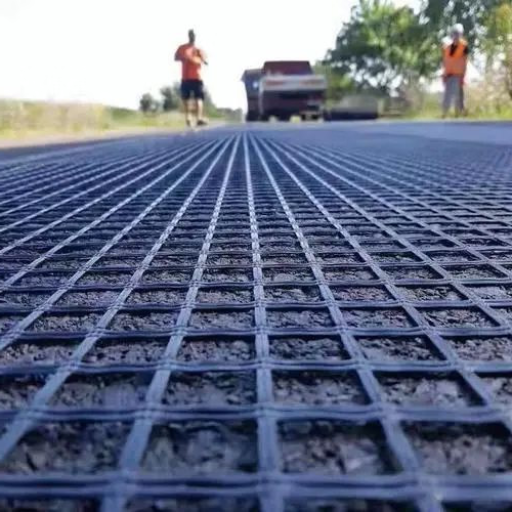
In my view, geogrids must play an essential role in many real-world instances, such as the reinforcement of retaining walls, road and railroad stabilization, and erosion prevention on slopes. They lend structural support and enhance durability and, therefore, are imperatives in infrastructural projects.
Road Project Case Studies
One prominent case study, which attests to the efficiency of geogrid technology in road construction, is the A14 Cambridge to Huntingdon improvement strategy in the U.K. Being a large-scale project, it had been finished in 2020 whereby geogrids had been applied to several sections of road upon weak soil. By incorporating geogrids, they managed to save a substantial amount in costs and time of construction and improved load distribution. It lowered the excavation depth by as much as 30%, which means it reduced material usage and carbon emissions, according to published data from the project.
Another situation is a highway restoration project in California, U.S. While problems from unstable slopes and heavy rainfall were mounting, geogrids were used to stabilize the base while reroofing the roadway. Reported allegations suggest that with the use of geogrids, the lifespan of the restored sections of the highway has been increased by 50% in an estimate and has also curbed maintenance costs for the long term.
Moreover, cost benefits are statistically backed for geogrids in road construction: If you look at studies, the practice of construction can have 10-25% cost reductions due to less material requirements and more rapid project implementation through geogrids. Such success stories show how road infrastructure projects are transforming through geogrids worldwide to bring together concepts of engineering with sustainability and economic efficiency.
Successful Application in Parking and Haul Roads
Geogrids ensure parking lots and haul roads bear the infrastructure of durability and cost savings. Recent studies and reports in the industry attest to their efficiency in converting loads into the subgrade surface, reducing the maintenance cost and extending the service life.
An example would be a report that suggested that the use of geogrids in the construction of parking lots would be able to decrease the thickness of the aggregate layers needed by up to 50%, while still maintaining structural integrity. On the other hand, another report assesses that haul roads constructed with geogrids perform better under heavy loading and handle approximately 35% more cycles of heavy truck traffic than conventional designs, thus saving industries like mining and logistics significantly from a standpoint where stability and durability matter.
Other case studies mention that construction by its nature involves a lot of carbon emissions, and with the reduced construction activities, geogrid-supported construction would be able to greatly meet these sustainability goals. These statistics prove that geogrids act towards economic efficiency and are equally in line with environmental objectives-the two sanding stones for a ready-mix concrete construction site.
Geogrids in Retaining Marine Wall Construction
Geogrids play a very important role in contemporary retaining wall construction as well as providing better stability and load distribution at lower construction costs. Due to the reinforcement of soils and aggregate backfill, retaining walls with geogrids can be taller and much sturdier, particularly on rugged terrain.
From the recent data, it was manifested that the geogrid system would increase the load capacity of a wall to up to 50% more than the conventional method. Furthermore, geogrids allow walls to be constructed at greater heights, commonly above 40 feet, without any compromise to structural integrity. Hence, making geogrids very far-reaching with large-scale projects such as highway widening and industrial depot development.
Also, this contributed to sustainability by lowering excavations and material needs. Studies indicate that geogrid-reinforced retaining walls could reduce construction materials usage by some 30%, definitely reducing the cost and carbon emissions also. The lightweight geogrids ease transportation, thus speeding up installation and further reducing costs.
The developments within geogrid technology represent the value and promise of geogrids as a dependable environmentally friendly solution in retaining wall construction, offering greater long-term value economically as well as structurally.
Benefits of Using Geogrids in Road Construction
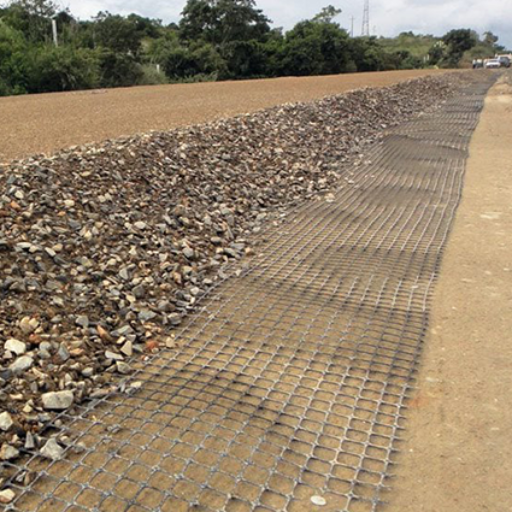
Geogrids provide varied advantages for road construction, including increased soil stability, material savings, and cost savings for the overall project. They also prolong the life of the roadways by resisting deformation along with swell loads.
Lengthening the Serviceability Period of Roads
Geogrids exerting reinforcement of the sublayer soil beneath roads and performing better load distribution is another factor that enhances road serviceability and longevity. Recent studies suggest that the addition of geogrids to road construction can reduce pavement thickness by as much as 25 percent, saving on material costs without constipating mutually enforced strength. Another advantage is that Geogrid can prolong the life of roads by at least 50 percent, since they oppose deformation associated with heavy traffic or climatic conditions.
Modern technology for geogrids, including biaxial and triaxial types, works well to resist tensile forces aiming to reduce pavement’s capacity to withstand repeated stresses being imposed by running vehicles over time. Some latest project data thus analyze that road infrastructures reinforced with geogrids require 30-40% less maintenance compared to conventional roads. Consequently, this minimizes the cost of long-term reimbursement and repair to infrastructure, which causes lesser inconvenience for commuters and logistical operations.
Another study conducted in 2022 analyzed the behavior of a geogrid-reinforced highway in the United States; the results pointed toward a marked decrease in rut depth and cracking over five years, thus reinforcing the argument for long-term benefits of geogrid integration. These developments bring to the fore that geogrids become strategically important in contemporary road-building options, considering economic efficiency and substantial infrastructure.
Reducing Maintenance Cost Through Better Stabilization
Recent advances and newer datasets point toward the critical role of geogrid technology in reducing maintenance costs and enhancing road durability. According to a report by the Transportation Research Board, by building the pavement up to be half as long, geogrid reinforcements can prevent rehabilitation from occurring for a longer time. In addition, it is said that road maintenance costs due to the appearance of cracking and rutting can decrease by 20 p.c. to 30 p.c. with the use of geogrid reinforcements.
One such instance is from a heavily utilized highway in Texas, where geogrid integration reduced pavement layer thickness by 25% while ensuring structural integrity. This further brought down initial construction costs and reduced the need for materials, pointing to the greener benefits afforded by geogrids. Moreover, data from the field on similar projects point to the ability of geogrids to enhance load distribution and reduce deformation under repeated traffic loads, thus maintaining smoother road surfaces.
As infrastructure budgets face more restrictions every day around the world, geogrids integration certainly presents one perturbing solution. By living up to the promise of being cost-efficient and having long-term performance, geogrids will be the answer to ensuring sustainable road networks capable of carrying loads of augmented traffic.
Improving Environmental Sustainability in Infrastructure
Geogrids improve the structural professionals greatly, and equally so enhance environmental sustainability in infrastructure development. Reducement in aggregate usage also implies geogrids contribute to environmental conservation. Aggregate usage can be reduced by up to 50% when geogrids are in use, along with the consequent reduction in carbon emissions related to extracting, transporting, and processing the materials required.
Geogrids enhance the life span of an infrastructure, thus drastically lowering the frequency at which it requires repair and refurbishment. Lesser need for repair implies less material wastage and energy consumption over time. From the perspective of the Geosynthetic Institute, roads with geogrid reinforcement enjoy an increase in service life by an average of 30%, which means in years they will require far fewer resources at the time of maintenance.
These installations further help in minimizing soil erosion and land degradation. Through stabilization and reduction in soil displacement, they offer protection to surrounding ecological environments during and after the construction process. The environmental benefits offered coincide with the broad sustainability agenda, thereby making the geogrid an indispensable consideration in environmentally friendly infrastructure projects of today.
Reference sources
1. Installation Damage of a Geogrid Employed for Stabilization in a Mining Area
- Authors: D. Tschöke, Delma Mattos Vidal de, Cássio Alberto Teoro Do Carmo
- Published in: International Journal of Geosynthetics and Ground Engineering
- Publication Date: January 31, 2023
- Summary: This study investigates the installation damage of geogrids used for stabilization in mining areas. It emphasizes the importance of understanding the damage mechanisms that can occur during installation, which can significantly affect the performance of geogrids in stabilizing soil structures. The research includes field observations and laboratory tests to assess the extent of damage and its implications for geogrid performance.
- Methodology: The authors conducted field tests in a mining area, analyzing the installation process and the resulting damage to the geogrids. They also performed laboratory tests to evaluate the mechanical properties of the geogrids post-installation.
Citation: (Tschöke et al., 2023, pp. 1–9)
2. Substantiation of the Road Construction Unbound Materials Calculation Model with Geogrids Stabilization
- Authors: Olena Usychenko, Pavlo Kharin, Anton Zarichniy
- Published in: Automobile Roads and Road Construction
- Publication Date: 2024
- Summary: This paper presents a model for calculating the effectiveness of unbound materials in road construction when stabilized with geogrids. The study finds that the use of geogrids significantly enhances the deformation modulus of pavement structures, particularly in weak soil conditions. The effectiveness of geogrid reinforcement is shown to depend on various factors, including the thickness of the unbound layer and the characteristics of the subgrade soil.
- Methodology: The authors conducted experimental studies involving static plate load tests on different pavement structures, comparing traditional and geogrid-reinforced designs. They analyzed deformation characteristics and established a calculation model based on the test results.
Citation: (Usychenko et al., 2024)
3. Gabion Wall Slope Stabilization for Pejagan – Prupuk Road Widening (STA 116+450)
- Authors: Andhika Kesuma, Yudhi Lastiasih, Ibnu Kurniawan, Deni Wiharjito
- Published in: Journal of Infrastructure & Facility Asset Management
- Publication Date: April 12, 2023
- Summary: This study focuses on the stabilization of road embankments using gabion walls combined with geogrids. The research highlights the effectiveness of this combined approach in increasing the factor of safety for embankment slopes, particularly in areas with unstable soil conditions. The findings suggest that the integration of geogrids with gabion walls can significantly improve slope stability.
- Methodology: The authors utilized the Limit Equilibrium Method (LEM) for modeling the slope stability and conducted reinforcement modeling to assess the effectiveness of gabion and geogrid combinations. They analyzed the factor of safety before and after reinforcement.
Citation: (Kesuma et al., 2023)
Frequently Asked Questions (FAQs)
What is a geogrid and what special role does it play in stabilizing roads?
A geogrid is a geosynthetic material used in civil engineering to strengthen soil and stabilize roadways. The grid formation of geogrids facilitates the proper distribution of loads and restrains lateral movement, hence keeping soil particles contained and increasing pavement strength and subgrade soil. This method proves highly effective when working with weak subgrades or unpaved surfaces.
How does a road geogrid improve pavement performance?
Road geogrids improve pavement performance by stabilizing the road platform. This stabilization prevents rutting and cracking; hence, the pavement is provided with a prolonged design life. This reduces operational costs involving repairs and maintenance. A geogrid’s really high tensile strength makes it an effective reinforcement for loads and is used widely for paved and unpaved surfaces.
What types of geogrids are used commonly in stabilization projects?
Common types of geogrids used in stabilization projects include biaxial and uniaxial geogrids. Biaxial geogrids offer reinforcement along both horizontal and vertical directions, so their applications include surface stabilization for parking lots, haul roads, and embankments. Uniaxial geogrids provide reinforcements for distinct applications along one direction, like retaining walls.
Can geogrids be installed for landfill construction?
Yes, geogrids are suitable for the landfill. They ensure better landfill stability by forming a soil-layer capable of bearing the weights of the overburden and resisting lateral movement of the soil. This provides safety in operation and enhanced ground condition management in the landfill area.
When using a geogrid layer in flexible pavement, what are its advantages?
Given a geogrid layer in flexible pavement, there are several benefits: improved load distribution, reduction in pavement layer thickness, and the longer service life. Since the geogrid confines the soil and lends it lateral support, it temporarily reduces deformation under heavy loads, which would make it ideal for heavy traffic areas and working surfaces.
How do you install a geogrid in construction projects?
Geogrids are quite easy to install. A geogrid should be laid on the prepared subgrade soil quickly, in conjunction with a geotextile reinforced system. During construction, the mesh is usually anchored and covered with layers of additional soil to ensure that it will stay in place and provide confinement effectively, allowing swift project completion.
What role do geogrids play in the maintenance of parking lots?
Geogrids are critical to the maintenance and longevity of parking lots in that they stabilize the subgrade, preventing its deformation. The use of stabilization geogrid will reduce the lateral movement of the soil, which will be conducive to maintaining a smooth surface, thus placing less strain on the maintenance budget as repairs will be required less often over time.
How do geogrids treat weak subgrade conditions?
Geogrids treat weak subgrade conditions by providing a structural support system that redistributes load to enhance soil confinement. This is especially helpful in areas where good ground conditions do not exist and hence traditional methods fail. The introduction of geogrid layers will help the roadbed function as a more stable platform for construction, thereby reducing the risk of failure.

